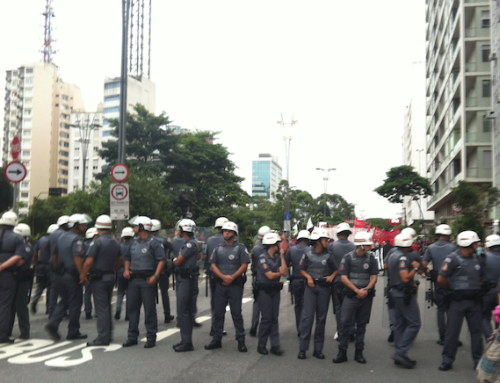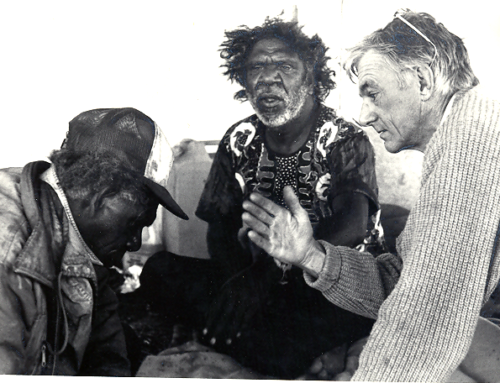by Janelle S. Taylor
A few years ago, I moved out of the university office that I had occupied for many years. I kept the place relatively neat, but I had a habit of stashing away things I didn’t know what to do with out of sight, in the backs of desk drawers and in boxes stored on top of bookshelves or in out-of-the-way corners. I then forgot about them. Forced by the impending move to clear everything out, I found myself confronted with an accumulation of items that charted my personal journey through generations of rapidly obsolescent technologies acquired, learned, used, and eventually abandoned during two and a half decades of research. I came to think of it as my Museum of Antique Technology.
I did not actually make a catalog, but if I had, it might have looked something like this:
● Item: One medium-sized cardboard box containing blue, black, and beige rubberized cords with electronic connectors in many shapes and sizes, none of which fit any devices currently in my possession.
Condition: dusty, mystifying.
● Item: Seventeen lined-paper spiral notebooks and nine lined-paper tape-bound pads, their pages filled with scrawled notes in ball-point pen, in my handwriting. Many pages of long-outdated references, which had been retrieved at great effort, printed in blueish dot-matrix ink on accordion-folded paper with perforated edges on each side and punctured with round holes at regular intervals.
Condition: ink faded, paper yellowing.
● Item: Two plastic boxes containing 3” x 5” index cards with scrawled notes and ideas, in faded ball-point pen, in my handwriting. I once brought a box just like this to a meeting with my dissertation advisor, early in graduate school. I remember saying, “I’m ready now, I’ve got the technology!” I was joking but, also, sort of not.
Condition: yellowing, embarrassing.
● Item: One clunky early 1990s microcassette tape recorder.
Condition: inoperable, battery compartment full of scary toxic-looking fuzz.
● Item: One small white plastic adaptor purchased from RadioShack for recording telephone calls (with permission, of course). Features one jack for plugging in the phone cord and another for connecting the microcassette recorder.
Condition: like new, but completely useless.
● Item: One cardboard shoebox filled with microcassette tapes in small clear plastic cases, each one labeled with a date and the name of someone I interviewed while working on my dissertation, all in the early 1990s. Among them, one labeled “Mom and Dad, 1994.” On a visit to Seattle that year, I stayed with my parents, and borrowed their car to drive around and interview various engineers and ultrasound technicians in the region, as part of my dissertation research. One afternoon, sitting with them in their living room, I turned on the recorder and asked them questions. I remember laughing at the awkward novelty of interviewing them, but I don’t remember what I asked them, or what they said. Even if I could locate a device capable of playing the microcassettes, however, I don’t think I could bear to hear their voices again. They both died years ago.
Condition: intact, potentially heartbreaking.
● Item: One microcassette transcription machine with a headphone jack and a foot-pedal connected by a thick black cord. I wore my 1990s-era headphones, earpieces covered in black foam connected by a curved metal piece that sat atop my head, the wire snaking from my left ear to the jack while typing up transcripts. Hours and hours spent listening to interviews, rewinding to try to catch words I had missed, cringing at the sound of my own voice.
Condition: dusty.
● Item: Eight or nine black 5.25” floppy disks (the kind that actually were floppy) and two boxes of yellow 3.5” floppy disks (not floppy, these were rigid), some labeled and some not. I remember feeling offended that my whole dissertation did not fill even one disk.
Condition: apparently indestructible.
● Item: Six or seven thumb drives of various sizes and designs, unlabeled, contents unknown. The first of these I had ever owned was given to me by a grant collaborator in the early 2000s. I was amazed at its small size and its storage capacity which, at the time, seemed so vast.
Condition: unclear.

A floppy disk (not floppy). Photo Credit: Pexels.com
Seeing these objects again brought up a complicated mix of feelings: amusement at how old-fashioned they now look, curiosity about what they might contain, and shock at their age (and mine), along with twinges of guilt and shame. Each item had once been a valued tool of my craft, used to record and store laboriously gathered interviews, transcripts, and fieldnotes. Handling them once more, the muscle memory of long-forgotten commands and controls came back to me, surging up from the mysterious recesses of my rusty brain—perhaps the same place from which the lyrics of 1970s pop songs regularly spring forth in response to music piped into elevators and grocery stores.
The ephemerality of the technologies used to record social life is, perhaps, one of the true constants in the history of anthropology. In 1901, for example, when the German anthropologist Bertholt Laufer traveled to China on behalf of the American Museum of Natural History (AMNH) in New York, the wax cylinder recording technology that he used to record Chinese folk songs and opera music was, then, still quite new. By the 1940s, AMNH had given Laufer’s recordings, along with thousands of other by-then obsolete wax cylinders, to the Indiana University archives. In the 1980s, archivists there transferred them to tape—another technology that then rapidly became obsolete (Feaster 2020). Such recordings, with their complicated technological and historical entanglements, are among the objects collected by earlier generations of anthropologists that are now being repatriated and reclaimed by contemporary descendants of the people whose voices and songs they have preserved (Gunderson, Lancefield, and Woods 2018).
As the historian of science Rebecca Lemov has noted, the concern of scholars working in what we now recognize as the era of “salvage anthropology” to document lifeways of peoples they thought to be “disappearing” or “endangered,” has given way, over time, to a concern with the need to preserve “disappearing” or “endangered” anthropological data (Gruber 1970; Redman 2021b; Redman 2021a; Lemov 2016). Describing the efforts of early twentieth-century anthropologists to record Indigenous languages, Lemov and fellow historian Judith Kaplan note that “not only have the languages faced extinction, the ‘salvages’ themselves—handed down in smudged ink and a succession of obsolete recorded media—have been susceptible to second-order endangerment” (Kaplan and Lemov 2019). This same problem of “second-order endangerment” may confront contemporary research practices grounded in theoretical frameworks and methodological commitments that are quite diametrically opposed to those that motivated Salvage Anthropology, to the extent that they seek to salvage some permanent record from the transformative, elusive, and authorizing “experience” of fieldwork (Taylor 2014).
A few of the items in my Museum of Antique Technology I have kept, but most I dropped off at a store in Seattle that accepted used electronics for recycling. I don’t honestly know how or where they were to be recycled. It is possible that some ended up making their way to a facility run by a company called Total Reclaim, located south of Seattle, that (still) advertises itself as a site for “responsible recycling.” I had gone there once, years before, to drop off some used computing equipment. The yawning entrance to the cavernous facility was cluttered with piles of discarded TVs, computer monitors, and other machines while, in the noisy darkness within, workers could be dimly seen standing high atop vast structures, ripping items to pieces. It looked to me like a vision of hell. That was before the owners of Total Reclaim went to federal prison for selling millions of pounds of LCD devices for export to Hong Kong, while falsely representing to clients that the electronics would be recycled responsibly domestically (Rosenberg 2019). One of them apparently went to prison again early this year, this time for stealing hundreds of thousands of dollars from the company and dodging taxes (Paben 2022).
Archivists at the Indiana University archive that houses Bertholdt Laufer’s audio recordings (transferred from wax cylinder to tape in the 1980s) have, more recently, been working to digitize them (Feaster 2020). Because the cloud is forever, right (Peters 2015)?
I guess I had better hope so. The research that I am doing these days involves, among other things, reading chart notes taken from the medical records of people diagnosed with dementia, for what they can reveal about social relations, care needs, and caregiving networks (Sasaki 2021). To do this work, I log on to a laptop computer, load and log on to a VPN software, use a remote desktop application to log on to a secure server located thousands of miles away, then use statistical software and qualitative data analysis software housed on that server to examine and work with the data, all of which is stored there in electronic form. The chart notes that I am working with were originally copied from electronic health records into Word documents, then printed out on paper (no one expected these to be used for research and the Word documents, apparently, were deleted), then scanned back into digital formats and, finally, processed using optical character recognition software by members of my research team. This data, all of my fieldnotes, most of what I read, and many of my publications (including this one) now exist only or primarily as electronic documents.
That fact is rather discomfiting. Emails I receive sometimes include a reminder to “consider the environment before printing,” but wasting paper made from trees is hardly the only or the worst harm that an inhabitant of the information economy can do. All of this online activity has troubling consequences for labor and human health, as well as the environment (Ensmenger and Slayton 2017). The infrastructure that supports it is unsustainable and, no doubt, will one day be dismantled.
I can’t help but wonder: twenty or thirty years from now, what kind of future Museum of Antique Technology will hold my current fieldnotes? Or this essay?
Acknowledgments
Thanks to Magdalena Zegarra Chiappori and Verónica Sousa for the invitation to contribute to this series, and thanks to Ilana Gershon, Pamela Klassen and Michael Rosenthal for helpful comments on a draft version.
References
Ensmenger, Nathan, and Rebecca Slayton. 2017. “Computing and the Environment: Introducing a Special Issue of ‘Information & Culture.’” Information & Culture 52 (3): 295–303.
Feaster, Patrick. 2020. “Berthold Laufer’s Chinese Stereo Recordings of 1901.” https://griffonagedotcom.wordpress.com/2020/04/28/berthold-laufers-chinese-stereo-recordings-of-1901/, accessed February 9, 2022.
Gruber, Jacob W. 1970. “Ethnographic Salvage and the Shaping of Anthropology”. American Anthropologist 72 (6): 1289–1299.
Gunderson, Frank D., Robert C. Lancefield, and Bret D. Woods. 2018. The Oxford Handbook of Musical Repatriation. Oxford Handbooks Online. New York: Oxford University Press.
Kaplan, Judith, and Rebecca Lemov. 2019. “Archiving Endangerment, Endangered Archives: Journeys through the Sound Archives of Americanist Anthropology and Linguistics, 1911–2016”. Technology and Culture 60 (2S): S161–S187.
Lemov, Rebecca. 2016. “Anthropological Data in Danger, c. 1941-1965”. In Endangerment, Biodiversity, and Culture, edited by Fernando Vidal and Nélia Dias, 87–111. New York: Routledge.
Paben, Jared. 2022. “Former Total Reclaim Exec Headed to Prison (Again)”. E-Scrap News. https://resource-recycling.com/e-scrap/2022/01/20/former-total-reclaim-exec-headed-to-prison-again/, accessed February 14, 2022.
Peters, John Durham. 2015. The Marvelous Clouds: Toward a Philosophy of Elemental Media. Chicago: The University of Chicago Press.
Redman, Samuel J. 2021a. Prophets and Ghosts: The Story of Salvage Anthropology. Cambridge: Harvard University Press. https://www.hup.harvard.edu/catalog.php?isbn=9780674979574, accessed February 14, 2022.
Redman, Samuel J. 2021b. “Ambushing Geronimo: An Introduction to Salvage Anthropology”. Lapham’s Quarterly. https://www.laphamsquarterly.org/roundtable/ambushing-geronimo, accessed February 14, 2022.
Rosenberg, Mike. 2019. “Largest E-Recycling Fraud in U.S. History Sends Owners of Kent Firm to Prison”. The Seattle Times. https://www.seattletimes.com/business/largest-e-recycling-fraud-in-u-s-history-sends-owners-of-kent-firm-to-prison/, accessed February 15, 2022.
Sasaki, Christopher. 2021. “Medical Anthropologist Janelle Taylor Is Part of US$56M NIH Grant to Study Alzheimer’s Disease”. Faculty of Arts & Science. https://www.artsci.utoronto.ca/news/medical-anthropologist-janelle-taylor-nih-grant-study-alzheimers, accessed February 15, 2022.
Taylor, Janelle S. 2014. “The Demise of the Bumbler and the Crock: From Experience to Accountability in Medical Education and Ethnography”. American Anthropologist 116 (3): 523–534.
Janelle S. Taylor is Professor of Anthropology at the University of Toronto. She teaches and researches medical anthropology. She has published on a range of topics, including fetal ultrasound imaging, medical education, advance care planning, and dementia. Here is a hyperlink to her faculty webpage: https://www.anthropology.utoronto.ca/people/directories/all-faculty/janelle-taylor
Cite As: Taylor, Janelle S. 2022. “My Museum of Antique Technology” In “Taking Note: Complexities and Ambiguities in Writing Ethnographic Fieldnotes,” edited by Magdalena Zegarra Chiappori and Verónica Sousa, American Ethnologist website, 26 August 2022, [https://americanethnologist.org/features/collections/taking-note-complexities-and-ambiguities-in-writing-ethnographic-fieldnotes/my-museum-of-antique-technology]




